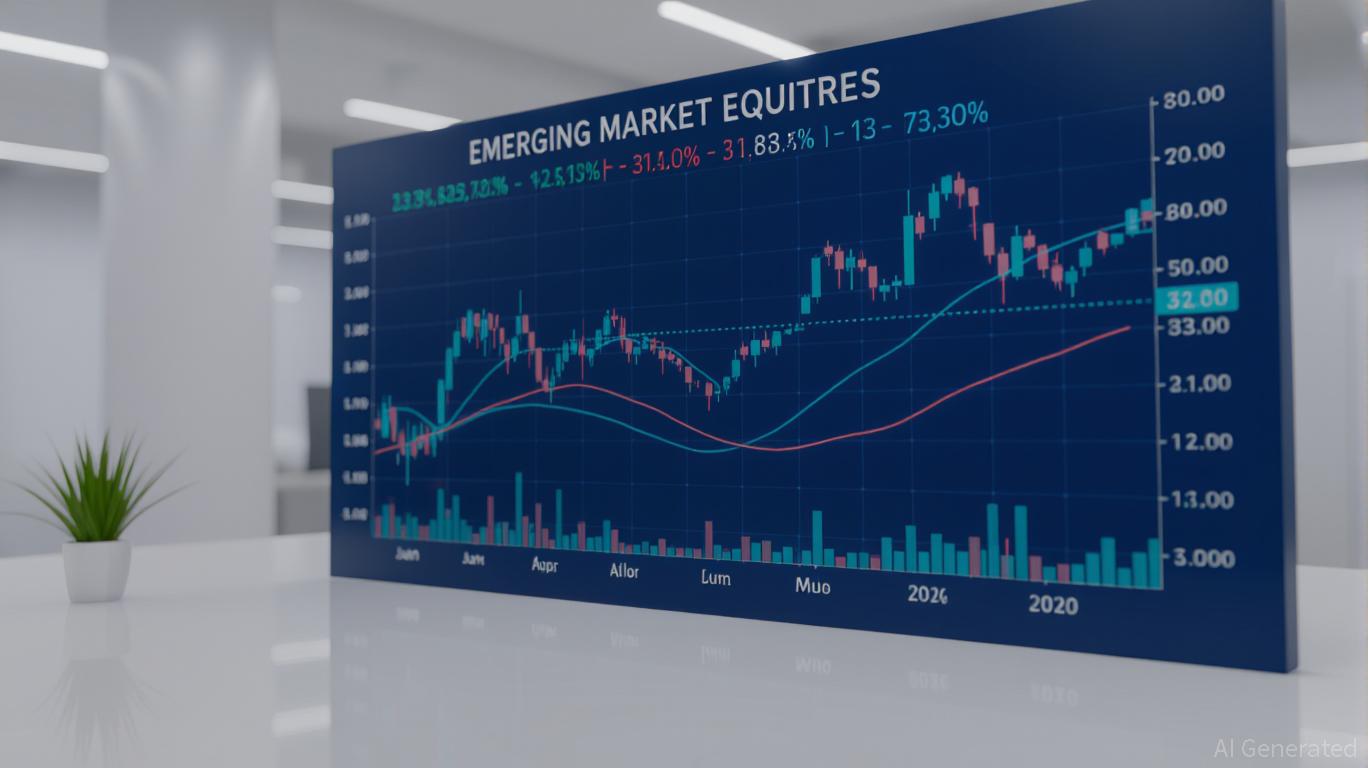Navigating the Tariff Volatility Paradox: Positioning for a Fed-Driven Recovery
The world of global trade is caught in a quantum state of uncertainty—what we call “Schrödinger's Tariffs”—where threats loom as both potential catalysts and phantom risks until they materialize. This duality creates a paradox for investors: markets react to tariff announcements as if they are real, yet the economic costs of actual implementation could force central banks to pivot sharply. With the U.S. Federal Reserve (Fed) balancing inflationary pressures from tariffs against slowing growth, the path to equity recovery hinges on timing. Here's how to position for the near-term turbulence and the eventual cyclical rebound.
The Near-Term Sell-Off: Trump's Tariff Threats and Market Jitters
The Trump administration's July 2025 threats to impose 30% tariffs on EU and Mexican imports by August 1 have already rattled markets. While analysts widely view this as a negotiation tactic—similar to past deadlines that were delayed—the uncertainty has sparked volatility:
- The Dow Jones fell 0.3%, with industrials and materials sectors leading losses.
- The S&P 500 dipped 0.1%, while European markets (e.g., Stoxx Europe 600) dropped 0.4%.
-
Ask Aime: Should I buy stocks before Trump's tariff threats become real?
The “real economy” impact is still muted, but the threat has forced companies to hedge against higher costs. The EU and Mexico have delayed retaliatory measures, buying time for diplomacy. However, the market's knee-jerk reaction highlights the risk of a self-fulfilling prophecy: fear of tariffs can tighten financial conditions even before they're enacted.
The Contradiction: Tariffs as Both Catalyst and Cost
The paradox lies in how tariffs are treated as both a policy tool and an economic burden. While the Fed monitors inflation (which tariffs could boost), the June Leading Economic Index (LEI) signals stalling momentum:
- The U.S. LEI fell 0.1% in May 2025, marking a 2.7% decline over six months—triggering a recession signal under The Conference Board's “3Ds” framework.
-
Ask Aime: What's the strategy for near-term market volatility?
This data underscores the “Schrödinger's Tariffs” dilemma: markets price in the risk of tariffs, but the actual economic drag (if tariffs materialize) could force the Fed to cut rates faster than expected. The Fed's delayed easing—projecting two 2025 rate cuts but fewer in 2026—reflects this tension.
The Fed's Tightrope Walk: Delayed Easing and Its Implications
The Fed faces a stark trade-off:
1. Tariff-Driven Inflation: Higher import costs risk pushing inflation above targets.
2. Growth Slowdown: The LEI's decline and weak consumer confidence (University of Michigan Index at 57.9 in March - a near two-year low) suggest the economy can't withstand prolonged tariffs.
The Fed's June Summary of Economic Projections (SEP) now expects one fewer 2026 rate cut due to inflation risks. However, Chair Powell's “wait-and-see” stance hints at a pivot by late 2025 if growth weakens further. A September 2025 rate cut now seems critical—markets will watch tariff negotiations and August's inflation data closely.
Positioning for the Cyclical Rebound: Industrials and Emerging Markets
The short-term pain is inevitable, but the long-term opportunity lies in sectors that will benefit when the Fed finally eases:
1. Industrials: Playing the Trade Policy Turnaround
- Why? Tariff volatility disproportionately impacts industrials (e.g., aerospace, machinery). Once trade tensions ease, these stocks could rebound sharply.
- Pick: Caterpillar (CAT): A bellwether for global trade, CAT's valuation is depressed despite strong free cash flow.
- Risks: If tariffs become permanent, CAT's margins could shrink.
2. Emerging Markets: Fed Easing and Currency Rebound
- Why? EM equities (e.g., Mexico, China) were hit by dollar strength and trade uncertainty. A Fed pivot would weaken the dollar and boost local currencies.
- Pick: iShares MSCI Emerging Markets ETF (EEM): Offers broad exposure to EM recoveries.
- Risks: Geopolitical flare-ups (e.g., U.S.-China tech bans) could prolong volatility.
3. Defensive Plays for Near-Term Turbulence
- Bonds: U.S. Treasuries (e.g., iShares 20+ Year Treasury Bond ETF TLT) offer a hedge against equity selloffs.
- Utilities: Regulated companies like (NEE) provide steady dividends.
The Bottom Line: Short-Term Caution, Long-Term Optimism
The August 1 tariff deadline is a critical
. If threats are delayed or scaled back, equities could rebound quickly. If tariffs materialize, the Fed will likely cut rates sooner, spurring a cyclical recovery.Investment Strategy:
- Sell: Reduce exposure to trade-sensitive sectors (e.g., autos, semiconductors) until the August 1 deadline passes.
- Buy: Accumulate industrials and EM equities on dips, with a focus on quality names.
- Hedge: Use Treasuries or inverse ETFs (e.g., ProShares Short S&P 500 SH) to offset near-term volatility.
The Fed's delayed easing is not a barrier to recovery—it's a catalyst waiting to be triggered. Stay patient, and position for the policy pivot.


Comments
No comments yet